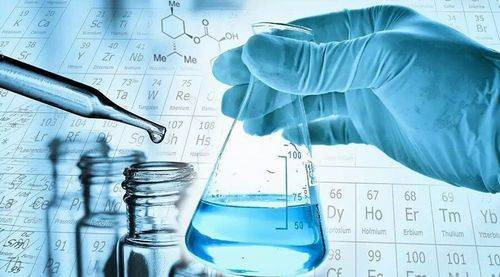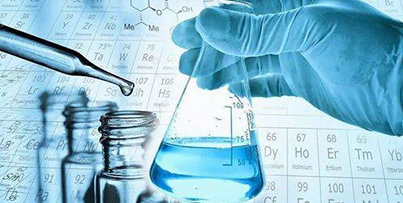- 2021-05-06
- 阅读量:2666
- 来源|CBO
- 作者|Guo Fen
In the short term, after the official implementation of the Evaluation Standards for Cosmetic Efficacy Claims, some local small and medium-sized enterprises will surely suffer pain. But this does not mean that it will inhibit the development of enterprises. On the contrary, the establishment of the efficacy evaluation system will be favorable to the standardized and rapid development of the industry.

Many industry insiders said that for some small enterprises or enterprises that do not pay attention to efficacy evaluation, the Standards will inevitably cause pain in the short term. It is necessary to emphasize the pains do not mean "restriction". After the pains the industry will usher in a more standardized and rapid development.
However, after the release of the Standards there are still many doubts in the industry. For example, when there are multiple evaluation and assessment standards and methods for an efficacy claim, which one should be selected by merchants? If one testing method corresponds to multiple efficacy claims, such as claims of freckle and whitening-translucent, anti-dark yellow, etc., how to define the connotation and extension of these efficacies?
For these questions the reporter from Cosmetic Business Online (CBO) invited Dr. Wang Ling, director ofthe Technical Expert Committee of Shandong Cosmetics Industry Association and head of the efficacy evaluation laboratory of Qilu University of Technology, to give some answers.
The Evaluation Standards for Cosmetic Efficacy Claims apply to cosmetics produced and operated within the territory of the People's Republic of China. In other words, do the Standards apply to all domestic cosmetics and imported cosmetics that are produced and operated in China?
Regarding this question, Wang Ling believes that the Regulations on the Supervision and Administration of Cosmetics stipulate that all imported cosmetics (whether special or ordinary) must be filed with and approved by the National Medical Products Administration before being sold.
Therefore, when imported cosmetics enter China they should be reasonably claimed in accordance with the relevant regulations and requirements of China on cosmetics label management. Those for which evidential materials on efficacy claims need to be provided are subject to the related efficacy evaluation work as required.
Wang Ling believes that there are multiple levels of standards, among which there is a certain order of compliance. The order is as follows: national standards, industry standards, group standards, and enterprise standards. The highest standards always prevail. If there are no corresponding standards, publicly published materials such as papers, essays, documents, or methods validated in laboratories, may be used as reference. At present, the first reference standards are the efficacy evaluation method in the Technical Specifications for Cosmetic Safety.
Methods stipulated in China's compulsory national standards and technical specifications for cosmetics;
1. Methods set out in other relevant laws and regulations, national standards, and industry standards of China;
2. Methods stipulated by relevant foreign regulations or technical standards;
3. Methods released in the technical guidelines of domestic and foreign authoritative organizations, technical institutions, and industry associations, methods publicly released in professional academic journals and journals, or methods drawn up and established independently;
However, except for special regulations, Items 1 and 2 above should be first selected for cosmetic efficacy claim evaluation and testing; and where Items 1 and 2 above have no specific provisions, Item 3 or 4 may be arbitrarily selected.
Wang Ling believes that different efficacy claims have different meanings. Merchants should try their best to choose the claim words contained in the category of efficacy claims, some examples are: freckle reduction and whitening, helpful to reduce or slow down skin pigmentation and achieve skin whitening effect, or achieve skin whitening effect through physical covering.
In fact, an efficacy claim can be verified by multiple evaluation and testing methods.
Wang Ling said that for claims for which testing methods are not available, preparation may be made by reference to materials required for record-filing and documents and experimental reports and other materials can be used for certification. In addition, the state has given a certain buffer period, and there should be supporting secondary regulations and specifications subsequently. Please wait patiently.
Wang Ling said that such experiments can be provided as evidentiary materials for testing methods with corresponding efficacy claims. They may also be tried as new efficacy claims subject to specific explanations.
Wang Ling believes that such cosmetics should be scientifically and reasonably analyzed according to the specific conditions of the product efficacy claims.
1. First, for new efficacies that can be directly identified via visual sense, smell or other sense organs or have effect through physical interaction and are clearly marked as only having physical effect on the label, the submission of efficacy claim evaluation materials may be exempted.
2. For cosmetics subject to claim of new efficacies other than those aforementioned, the cosmetics registration and filing inspection agencies shall carry out product efficacy evaluation in accordance with the experiment methods stipulated in mandatory national standards and technical specifications and issue reports.
However, it should be clearly noted that, if testing methods other than those stipulated in compulsory national standards and technical specifications are adopted, two or more cosmetic registration and filing inspection agencies shall be entrusted with method verification. Only if the methods are verified as meeting requirements, new efficacy evaluation may be conducted and the validity, reliability and other parameters of the methods shall be explained in the product efficacy claim evaluation report.










